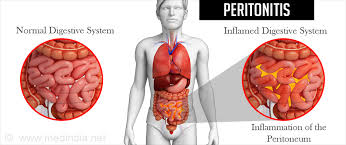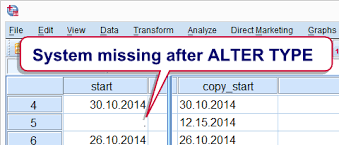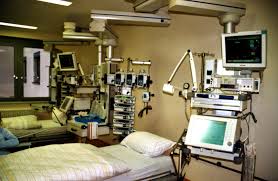
How Do Customers Choose Between Online Travel Agency and Traditional Travel Agency
Order Instructions:
You need to do a background research on your topic/ startup to start the project.
You must write 1000 to 1500 words excluding references and appendix.
Format:
use Times New Roman font,
size 12,
1.5 spacing /
use normal margins/
1. Abstract
– direct question to the search project
– and an answer = we found out that….
2. Introduction
– Summarise academic articles/books
3. Body
– Going into details (from everywhere (articles, books, twitter, facebook etc.))
4. Summary/Conclusions
– We need a Marketing Implementation ( How can Marketing benefit from…, My results can effect Marketing in which way..)
so can talk about the background of online travel agency, advantage, disadvantage, impact to travel world and the customer preference regard hotel, flight ticket, transport and why customers will choose online travel agency rather than traditional travel agency…etc
SAMPLE ANSWER
How Do Customers Choose Between Online Travel Agency And Traditional Travel Agency?
ABSTRACT
This search project aims at determining how customers choose between online and traditional travel agencies. It is established that consumer choice is determined various factors including the availability and ability to use technology, past experiences, product value, accessibility and incentives, as well as a comparison of the strengths and shortcomings of each type of agency. Online travelling agencies are preferred because of the convenience associated with them and the increased internet use witnessed across the globe. However, traditional travelling agencies remain relevant and are mostly used by people with no access to technology or technical know how required, those who prefer direct contact with customer service and those who are more concerned about the reliability of online agencies. This report establishes that the choice to use online traveling agencies is determined by the reliability of information and service and ease of website use. The information collected in this report would be particularly useful to businesses that want to target online users.
INTRODUCTION
E-commerce has grown tremendously with increased access to technology and internet connectivity, rendering online business a highly preferred transactional platform. Traditional travel agencies are gradually losing popularity, as customers’ preference shifts to online travel agencies; due to the convenience associated with online business. Online travel agencies are considered more convenient because customers can make their bookings from any location, and save time and money. This is unlike traditional travel agencies where one must be available physically to transact. However, it is notable that a considerable number of customers still prefer to use traditional travel agents as opposed to online ones due to various reasons including reliability, security and less complexity (Zhang et al, 2015; Cho & Agrusa, 2006). Research indicates that the decision to choose between an online and a traditional travel agency is influenced by various factors depending on the customer preferences. This paper is a discussion of how customers choose between online and traditional travel agencies.
BODY
A research by Henry Fund in 2016 showed that 53% of all travel in the richest economies is done online. These statistics indicate considerable growth in e-commerce across the world, a trend influenced by increased access to the internet (Patel, 2016). In China, Chinese Outbound Tourism Research Insitute (COTRI) established that online travel agencies are gaining popularity. In 2015, 20% of outbound travelers in China used online travel agencies to book for transport, a 7% increase from 2014 (Skift, 2016). However, it is notable that a considerable number of customers in China still prefer the traditional travel agencies. This is presented by the figure below.
A number of researchers have embarked on determining the factors influencing an individuals’ decision to choose either an online or traditional travel agency. A majority of these researches base their findings on the advantages and disadvantages of each type of agency. Online travel agencies have the advantage of convenience, such that customers can make bookings from the convenience of their homes, offices or anywhere as long as they have internet connection. The client on the other hand must go out of his way to access services in a traditional agency. Online traveling agencies offer time and cost savings to users. In essence, customers do not need to travel to a physical office and this saves them time. In addition, consumers can transact from their convenient location and thus do not have to incur travelling expenses to traditional agents (Pantelidis, 2014). In traditional agencies, customers incur more in terms of costs and time because they need to travel to the agency location. Queues at traditional agencies are also time consuming. Besides transacting anywhere, customers using online travel agencies can make bookings at any time, including non-official hours. Traditional travel agents limit their services to working hours, such that individuals cannot access services when they are closed (Pantelidis, 2014). In online business, customers have a wider choice of vendors. Internet offers customers a variety to choose from by providing various packages from competitors, such that they can benefit from cheaper and more competitive services. The customer has no choice but to take what the agency is offering, unlike in online agencies where the customer can compare different packages.
Traditional travel agencies have their own advantages which also illuminate the disadvantages of online travel agencies. Customers have direct contact with customer service, such that they receive any services required directly, including having their queries addressed immediately. This is unlike online agencies, where some sites do not offer direct customer service and the user may face challenges in case of any mishap when making a booking. Users of traditional agencies do not face technological challenges such as website downtimes, poor internet connectivity and power issues may affect access to services. Technical errors may also bring forth misleading information. Furthermore, there is no need for technical knowledge such as the ability to operate gadgets and surf the internet. This is because they can access services directly from customer service. It is also argued that information accuracy and reliability is higher in traditional agents because it is free from technical errors and can be verified physically. Bookings made physically are also more accurate.
The purchase decision making process is a complex undertaking and customers’ choice of a product is determined by a variety of factors. Below is a discussion of some of the factors influencing the decision to use online compared to traditional travel agencies.
Availability of infrastructure and ability to use
The most important aspect in considering online booking lies in the availability of technology and internet connectivity. This insinuates that an individual is more likely to use online booking if they have easy access to an internet device and more likely to use the traditional booking if they do not have internet access. As the world advances in terms of information technology, there is a rapid increase in the number of online users, which directly impacts online business. This is more so with the development if internet gadgets such as smartphones and tablets, which enable users to access online services from any location. Despite the availability of technology, the customer can only operate the online systems if they have the technical knowhow.
Product value
The value derived from a product or service plays an important role in influencing a customer’s purchasing decision. Scholl-Grissemann & Schnurr (2016) discuss how consumers booking intentions are affected by travel agency choices and establish that the increased utilitarian value derived from convenience is adequate to influence decision to purchase. In the case of OTAs, conducting the business online ensures that is convenient for the customer, given that they can make bookings at their own comfort. Customers also derive time value from faster service and cost savings in terms of time and money needed to visit a traditional travel agency.
Experience
According to Scholl-Grissemann & Schnurr (2016), the value of a product is only felt when it is used. Accordingly, the experience derived from the use of online and traditional travel agencies will influence whether a customer would utilize the service in future. Such experience would mostly emanate from the value derived from the service. Cho & Agrusa (2006) study user satisfaction in relation to online travel agencies note that customer satisfaction varies from traditional businesses because there is no opportunity for physical customer service to address customer needs. Accordingly, online travel agencies must appeal to customers through an attractive and easy to use website, adequate information and available and reliable services to ensure that online services are reliable. Scholl-Grissemann & Schnurr (2016) note that the consumer’s web experience may influence their choice of online booking in future.
Accessibility
Customers make decisions based on convenience, which implies that a customer is more likely to utilize what is easily available or convenient to them. A person who lives far from a traditional travel agency is likely to seek an online alternative because it would be more convenient. On the other hand, a person who does not have access to the internet or is not familiar with the online process or who has easy access to a traditional agency will most likely utilize it.
Incentives
Incentives to a great extent influence the customer’s choice between OTAs and traditional agencies. Guo, et al (2013) note that OTAs offer cash back incentives to travelers who book through their website, thus attracting new customers and retaining existing ones. This may be in the form of reduced room rates, which encourage customers to use online agencies. Zhang (2015) also note that incentives have led to increased growth in internet bookings, due to the low cost packages including accommodation, airline costs and car rentals, which customers can benefit from when they book online.
SUMMARY AND CONCLUSIONS
The discussion above establishes that a customer’s choice between an online and traditional travel agency is based on a variety of factors, which can be explained by the features of each business platform. Based on the advantages and disadvantages of each, it can be established that the increased availability of internet and the convenience of online business have led to increased use of online traveling agencies. On the other hand, lower affinity to technology and the desire for reliability has played a great role in maintaining the market share of traditional travel agencies. This report has implications on marketing in that it provides the determining factors of customer decisions when it comes to online and traditional travel agencies. Companies that desire to excel in online travel agency can rely on this report to determine how best to increase customer satisfaction and promote online sales.
References
Cho, YC & Agrusa, J 2006, Assessing Use Acceptance and Satisfaction toward Online Travel Agencies, Information Technology & Tourism, 179–195.
Guo, X, Zheng, X, Ling, L, & Yang, C 2014, Online coopetition between hotels and online travel agencies: From the perspective of cash back after stay, Tourism Management Perspectives, 12, 104-112.
Pantelidis, LS 2014, The Routledge Handbook of Hospitality Management Routledge, London, Routledge.
Patel, N 2016, Online Travel Agencies, The Henry Fund Research, https://www.biz.uiowa.edu/henry/download/research/Online_Travel.pdf
Scholl-Grissemann & Schnurr 2016, Room with a view: how hedonic and utilitarian choice options of online travel agencies affect consumers’ booking intentions, International Journal of Culture, Tourism and Hospitality Research, 10 (4), 361 – 376
Skift, DA 2016, Online Travel Booking Grows in China, But Traditional Agents Still Dominate, https://skift.com/2016/05/20/online-travel-booking-grows-in-china-but-traditional-agents-still-dominate/
Toh, RS, DeKay, CF & Raven, P 2011, Travel Planning: Searching for and Booking Hotels on the Internet, Cornell Hospitality Quarterly 52(4) 388–398.
Zhang, M et al 2015, Online Travel Agent Service and Customer Satisfaction Based on Correlation Analysis:A Marketing Perspective in China, Journal of Marketing and Consumer Research, 11, 99-107
We can write this or a similar paper for you! Simply fill the order form!












